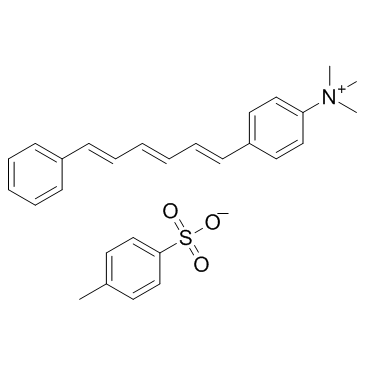Membrane fluidity aspects in endocytosis; a study with the fluorescent probe trimethylamino-diphenylhexatriene in L929 cells.
D Illinger, P Poindron, J G Kuhry
Index: Biol. Cell 71 , 293, (1991)
Full Text: HTML
Abstract
The fluorescent hydrophobic plasma membrane probe, trimethylamino-diphenylhexatriene (TMA-DPH) was previously shown to follow the plasma membrane throughout its internalization and recycling process and thus to behave as a marker for endo- and exocytosis in living cell systems. In this paper, we made use of these properties to investigate membrane fluidity effects associated with endocytosis in L929 cells. For that purpose we performed TMA-DPH fluorescence anisotrophy measurements which showed that endocytosis starts from particularly rigid regions of the plasma membrane (probably coated pits). The fluorescence anisotropy then continuously decreases to a lower limit corresponding to the membrane fluidity of the probe in the lysosomial membrane. Strikingly, the value of this limit is identical to the average anisotropy value in the peripheral membrane, which suggests that lysosomes and plasma membrane may have a similar phospholipidic composition and a possible common origin.
Related Compounds
| Structure | Name/CAS No. | Molecular Formula | Articles |
|---|---|---|---|
 |
TMA-DPH
CAS:115534-33-3 |
C28H31NO3S |
|
Flow Cytometric Fluorescence Anisotropy of Lipophilic Probes...
1990-10-01 [Plant Physiol. 94 , 729, (1990)] |
|
Interaction of gentamicin polycation with model and cell mem...
2012-10-01 [Bioelectrochemistry 87 , 230-235, (2012)] |
|
Membrane fluidity and activity of membrane ATPases in human ...
2013-02-01 [Biochim. Biophys. Acta 1828 , 241-248, (2012)] |
|
Membrane perturbing properties of natural phenolic and resor...
2008-10-29 [FEBS Lett. 582 , 3607-3613, (2008)] |
|
Development of membrane lipids in the surfactin producer Bac...
2008-01-01 [Folia Microbiol. (Praha) 53 , 303-307, (2008)] |